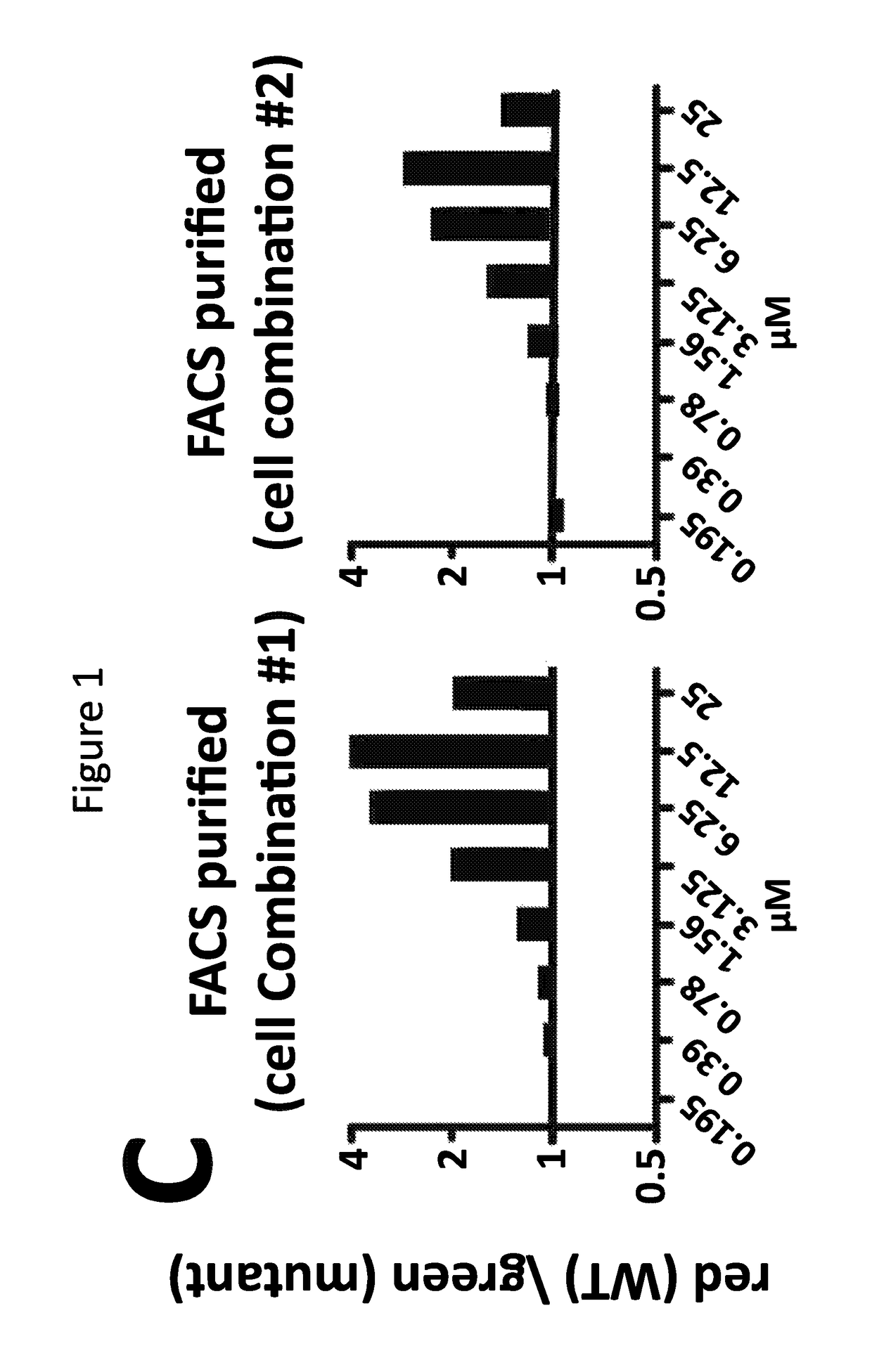Methods for identifying candidates for the treatment of neurodegenerative diseases
a neurodegenerative disease and candidate technology, applied in the field of neurodegenerative diseases candidate identification, can solve the problems of only minor benefit of the sole approved drug riluzole, no effective treatment for adult-onset neurodegenerative diseases, and inability to achieve the effects of reducing cardiovascular hospitalization, reducing central nucleation, and increasing cytoplasmic ca++ levels
- Summary
- Abstract
- Description
- Claims
- Application Information
AI Technical Summary
Benefits of technology
Problems solved by technology
Method used
Image
Examples
example 1
Two-color Screen for Agents that Preferentially Trigger Degeneration of ALS Motor Neurons
[0105]Given the failure of other groups to identify a spontaneous ALS-related motor neuron phenotype in cultures of patient-derived iPS-MNs, the inventors reasoned that the identification of stressors to which ALS motor neurons are preferentially vulnerable would have two advantages. First, it would provide insights into the functional differences between ALS and control motor neurons, and therefore potentially into the first changes underlying degeneration during the disease. Second, the selective degeneration of motor neurons thus induced could be used as an assay for candidate neuroprotective treatments. To achieve these goals, mouse embryonic stem cell-derived motor neurons (ES-MNs) were first used, because these are relatively easy to generate in large numbers at high abundance (about 40% of all cells in the culture are motor neurons).
[0106]Multiple ES cell lines from SOD1G93A mice that had...
example 2
Effects of CPA on Ca++ Handling by ES-derived Motor Neurons
[0109]To explore potential mechanisms underlying the ALS-selective toxicity of CPA, calcium imaging in ES-MNs loaded with the calcium indicator dye Fura-2 was used. In preliminary experiments, rise and fall constants following a 5-second pulse of kainic acid were monitored, and no significant difference between the G93A and WT lines were found (FIG. 2B). These results suggest that there is not overall dysregulation of Ca++ buffering in these embryonic motor neurons, in agreement with the similar spontaneous survival properties observed for WT and G93A motor neurons. It was hypothesized that CPA might selectively induce an imbalance in Ca++ handling. To monitor release of Ca++ from endoplasmic reticulum (ER) stores, ES-MNs of each genotype were incubated for 20 minutes with 10 μM CPA. An initial rapid increase of Fura-2 signal was followed by a slow recovery, as Ca++ was sequestered by other routes, out of which mitochondria ...
example 3
Techniques for Identification and Enrichment of Human iPS-MNs
[0110]Labeled populations of iPS-MNs from human patients are necessary to perform precise electrophysiological and gene expression analyses on iPS-MNs. Using a construct that was a generous gift of C. Marchetto and F. Gage (Salk), a recombinant lentiviral system was used to label iPS-MNs following differentiation (FIG. 3). The vectors utilize a truncated 3.6 Kb segment of the mouse HB9 promoter to drive expression of tagRFP. Motor neuron specificity of the sHB9::RFP virus was confirmed by immunohistochemistry and expression analysis. hES-MN cultures were infected one day following differentiation with approximately 1 transducing unit of sHB9::RFP virus per cell and then allowed to mature for an additional 20 days. After maturation, cultures were immunostained for LVsHB9::RFP and motor neuron marker Islet1 / 2 (FIG. 3A). Viral RFP overlap with HB9::GFP and Islet1 / 2 was quantified using MetaMorph Multi-Wavelength Cell Scoring ...
PUM
| Property | Measurement | Unit |
|---|---|---|
| molecular weight | aaaaa | aaaaa |
| molecular weight | aaaaa | aaaaa |
| molecular weight | aaaaa | aaaaa |
Abstract
Description
Claims
Application Information
 Login to View More
Login to View More - R&D
- Intellectual Property
- Life Sciences
- Materials
- Tech Scout
- Unparalleled Data Quality
- Higher Quality Content
- 60% Fewer Hallucinations
Browse by: Latest US Patents, China's latest patents, Technical Efficacy Thesaurus, Application Domain, Technology Topic, Popular Technical Reports.
© 2025 PatSnap. All rights reserved.Legal|Privacy policy|Modern Slavery Act Transparency Statement|Sitemap|About US| Contact US: help@patsnap.com



